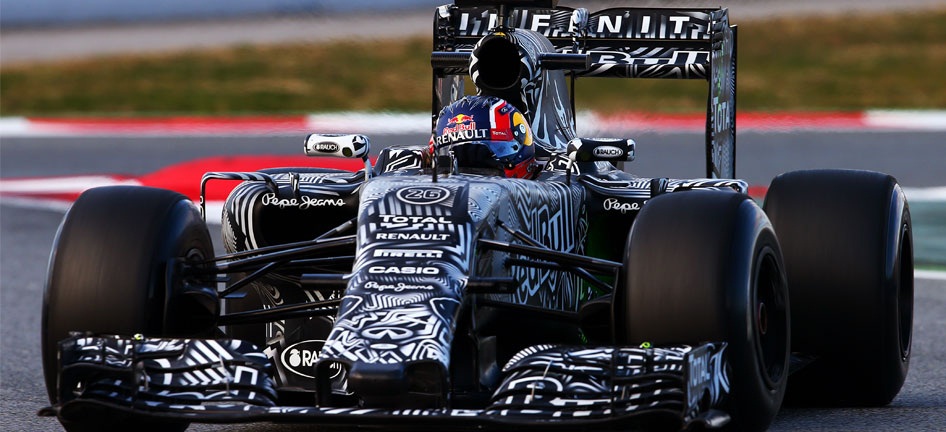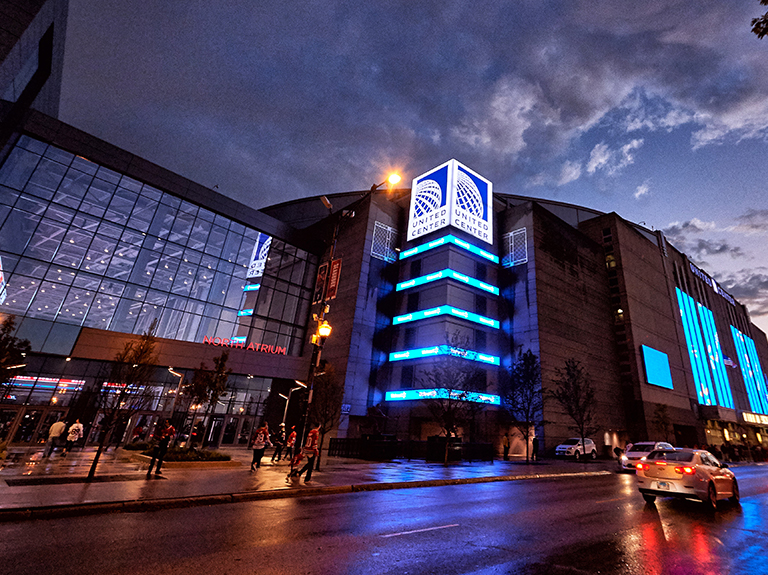Formula One: A Technology Race

Interview with Al Peasland, Head of Technical Partnerships at Infiniti Red Bull Racing
With the 2015 Formula One season about to open in Melbourne on March 15, AT&T is continuing to support the Infiniti Red Bull Racing team as its Innovation Partner. We sat down with Al Peasland to talk about how the sport is changing and what it means for his team.
AT&T: Formula One was transformed by the new rules that came in last season. What did Infiniti Red Bull Racing learn from this tough year of change? What were the big challenges?
Alan Peasland: It’s now obvious that Formula One is as much a technology race as it is a car race. We have to be the fastest on and off the track. And with one of the most extensive rule changes to the sport in the past 10 years, our ability to rapidly gather, share and analyze new data is more important than ever.
Of course, our sport is all about the people – the talented drivers, mechanics and engineers that make up Infiniti Red Bull Racing. But our team could not function without fast and highly secure communications on a reliable high-capacity network. The technology AT&T provides lets us connect our dispersed team and helps them collaborate to make the best use of their talent, skills and experience.
The AT&T infrastructure has allowed us to transfer at least 200GB of data between our UK headquarters and the track during every race. Our 2014 network was two and a half times faster than that of 2013 and provided higher bandwidth. This has allowed us to make extensive use of telepresence, to introduce CAD and design tools into the garage, and to use factory-hosted datacenters to run simulations and analysis.
We couldn’t run these applications without AT&T providing low latency. In such a fast-moving environment, we would otherwise be effectively cutting the trackside team off from decision support from the Ops Room. Even at the Melbourne race, which is the furthest Grand Prix from our HQ, our latency-sensitive applications continue to work well.
Another big challenge is security. We have a highly mobile workforce that collaborates globally and shares vast amounts of sensitive information. It is critical to avoid any breach.
AT&T: When do you think the technology is most important to the team, in the pre-race preparation stage or during the race itself?
Peasland: It’s equally important in both instances, but for different reasons. Pre-race preparation relies on the collaboration between HQ and trackside to optimize and refine the car for the specific conditions presented to us at each particular race event. During the race, the collaboration provides a mission critical link to assist with health monitoring of the car and providing real time race strategy support to the race team and drivers. Today’s Formula One car is considered an evolving prototype – a design that is constantly being refined in search of the next tenth or hundredth of a second performance improvement per lap. Over the course of a Formula One season, we process many thousands of design changes to create new components that have to be sent to the track to be assembled onto the cars in time for the race event.
As our Innovation Partner, AT&T helps our team of employees and our critical partners work together – making sure that the trackside team, HQ staff in the UK and our engine manufacturer, Renault, in France can interact as if they were all at the race or test track together.
In 2015, there are three pre-season Formula One tests and two in-season tests, a limited amount of time for the team to gather data in preparation for race weekends. Practice sessions on Friday and Saturday before each Sunday race will continue to be crucial for us to understand performance gains from new car developments and to configure the cars for conditions on the track. We often have to add more telemetry and sensors to the car in order to perform detailed analysis during the practice laps.
AT&T: And what about during the race?
Peasland: As you can imagine, it’s fast-paced, but a lot of what happens on race-day is very well structured and planned by the Team. On a race day, we can have up to 100 different sensors on our cars, each measuring many different functions from tire temperature and pressure to suspension loads, acceleration and G-forces experienced by the car and driver. This data is analyzed with the help of factory-based engineers and simulation tools in the UK and France, using videoconferencing sessions for face-to-face meetings.
This collaborative multi-disciplinary approach helps us make strategic decisions that ultimately affect our race position and competitiveness – and ensure driver safety. But it would not be possible without a capable communications network. This is where AT&T plays a crucial role. We have a secure Virtual Private Network connection between the Operations Room at HQ and our other facilities and trackside teams at race or test events. Team members also use smartphones as part of a unified communications solution that is protected via AT&T mobile device management tools.
AT&T: In terms of technology, what’s new for the team in 2015?
Peasland: AT&T’s support will continue to touch almost every aspect of Infiniti Red Bull Racing’s operations. Our plans include consolidating all of the team’s WAN links onto the AT&T backbone. Sophisticated computer simulations are becoming increasingly important as a tool to help our engineers predict how the car will perform. We’ll be using them more often on race days, requiring extensive computing and communications power. In the near future, we’re also looking to expand our AT&T unified communications solution to include IP-based phone services, presence and video conferencing. Security, of course, is constantly being updated.
We are also enhancing the connectivity to our wind tunnel. The wind tunnel is a vital tool for the team as they hone the design of the car to make it is as aerodynamically efficient as possible. Testing generates huge volumes of data that need to be analyzed by engineers at HQ. A ten-fold increase in bandwidth and added resilience of the network to this facility, which is located in Bedford in the UK, will enable faster data transfer to our HQ for analysis and will greatly benefit the team on the track.
Formula One today is becoming ever more tech-focused and connected. AT&T’s blazing fast network and innovative solutions directly affect how we develop the car and how we gather data, learn from it and adapt. Our network infrastructure is now mission critical and gives us an edge on the track that is helping us take Infiniti Red Bull Racing to the next level.


